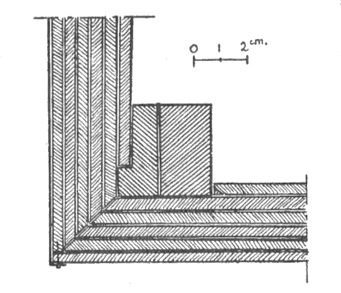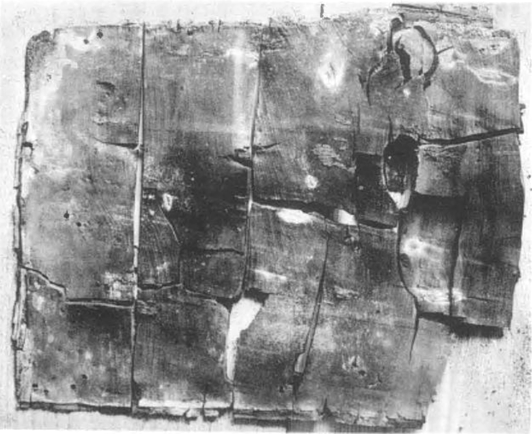We think of plywood as a modern invention, but is it? it is surprising to learn that the ancient Egyptians were already using plywood. In the 1933 edition of Annales du Service des Antiquités, there is a description of a coffin whose walls, and bottom were made of plywood, found at Saqqara and dating from the Old Kingdom (ca. 2700–2200 BC). There are six layers of wood, each 4mm in thickness, placed with the grain alternating in each direction [1,2], just as you would find in modern plywood. The first layer of the interior side made of vertical boards, and the outer layer of horizontal boards. The boards were anywhere from 4-30cm in width, yet none of the pieces of wood was broad enough for the height of the sides, or long enough for the length of the coffin [3].


In certain places on the boards there are small holes, generally paired, which pass through all layers of the plywood, intended to help bind them together. Between boards of the same layer, connection was ensured using small independent tenons engaged and dowelled in corresponding mortises made in the thickness of each board. The joints of the boards a the corners of the body were reinforced with wooden sticks. Due to the scarcity of large wood pieces, it seems the ancient Egyptian carpenters were very skilled at the technique of “patchwork” construction, joining irregular pieces of wood “by means of flat tongues or dowels, butterfly cramps, various forms of lashing and pegging, and sometimes in fine work by tongue and groove.” [3].
Further reading
- Eric Marx, “Ancient Egyptian Woodworking”, Antiquity, 20, pp.127-133 (1946)
- Annales du Service des Antiquités, (1933)
- D.M. Dixon, “Timber in Ancient Egypt”, The Commonwealth Forestry Review, 53(3), pp.205-209 (1974)
